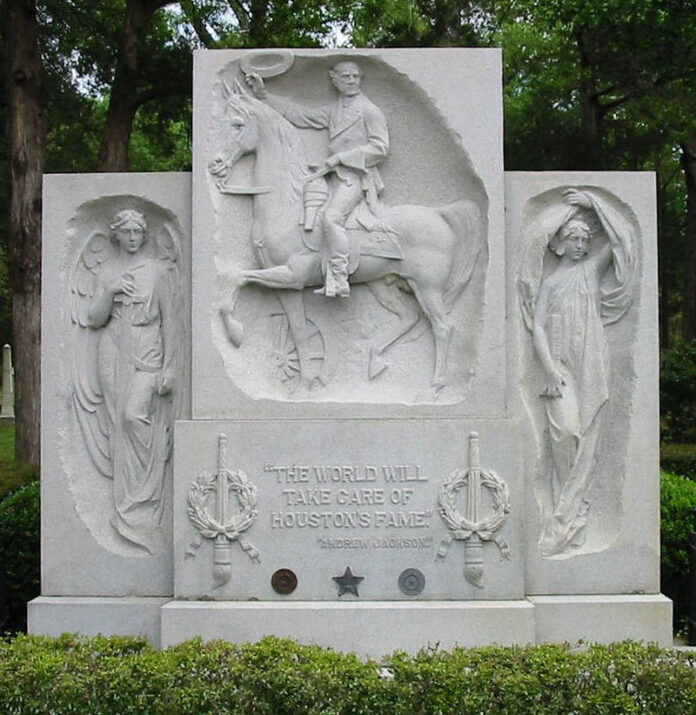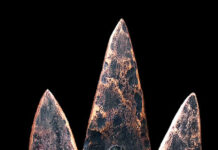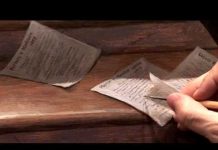Could’ve been Texas; Forthcoming book: Mormon Church nearly settled here
By Joshua Benton Staff Writer Page 29B
SALT LAKE CITY – When Brigham Young entered the Great Salt Lake Basin, legend has it he had but four words to say:
“This is the place.”
But if history had unfolded slightly differently, “the place” might have been Corpus Christi. In 1844, Mormon leaders were in serious discussions with Sam Houston about moving their flock to Texas, not Utah. Houston, anxious to put some sort of barrier between its boundaries and Mexico, came close to selling the southern tip of his young Republic to the church, which wanted to turn it into an independent theocracy the Mormons called the Kingdom of God.
When an untimely murder stopped those plans, the church’s flirtation with Texas was quickly forgotten.
The Texas Republic and the Mormon Kingdom of God

“From its earliest days of colonization, Texas sparked the imagination and ambition of some of North America’s greatest leaders. Joseph Smith, the founder of the Church of Jesus Christ of Latter-Day Saints, was one such man. His interest in Texas coincided with the strategic goal of Sam Houston, the president of the young Texas Republic, to create a buffer zone between the areas of Anglo settlement and Mexico. History has until now hidden how close the ambitions of these two men came to carving out a Mormon Kingdom of God in the Republic of Texas.
In 1844 Smith and his followers were received with political jealousy, religious suspicions, and distaste by their neighbors in Nauvoo, Illinois. Smith looked outside the United States for both refuge and empire. Times were difficult for Texas president Sam Houston, as well. Texas faced the wrath of the Comanches on the western frontier and of Santa Anna on the disputed southern border. To make matters worse, the U.S. Congress was balking on the annexation issue. Houston was desperate, in debt, and looking for assistance from England, France, or perhaps even the Mormons. Smith appointed an ambassador to the Texas Republic, and secret negotiations began in earnest.
According to Mormon records, Houston agreed to sell Smith a disputed strip of land between the Nueces River and the Rio Grande. Before the Mormon leader could take further action, however, he was murdered by a mob in Illinois. In the leadership succession crisis that ensued, the negotiations were abandoned.
Yet, the secret negotiations cannot be seen as a total failure. Houston remained a friend to the Mormons throughout his political career and was later instrumental in ending the Utah War of 1857–58. In addition, a group of Mormon settlers emigrated to the Texas Republic on the eve of statehood and became an important part of the Texas cultural mosaic.” Texas A&M Press
The Growth of the Latter-day Saints Church in Houston and Katy, Texas
by Houston History Magazine on July 30, 2016
The founder of The Church of Jesus Christ of Latter-day Saints, Joseph Smith
“The story of the church of Latter-day Saints in Texas began with the founders of the religion as well as the state of Texas. Just before his death in 1844, church organizer Joseph Smith sent a representative to Sam Houston to negotiate for a tract of land where the Latter-day Saints could establish a settlement. The proposal for all church members to settle in Houston was called the “Texas Plan.” Although Sam Houston was on board, it never came to fruition because the Prophet Joseph was martyred by an angry mob in Carthage, Illinois, before completing the deal. The church struggled to maintain its identity under the absence of its recently lost prophet. The church might have gone through with the deal, had the early leaders acted more quickly, but it chose instead to complete the temple in Nauvoo, Illinois, where the church was based at the time. This temple was critical to because it was the members’ only way of providing salvation for their ancestors. During this time of crisis, church leaders concentrated their efforts on keeping the church together, thus preventing the immediate move. The next time Latter-day Saints came in contact with the city of Houston was much later around 1918.

From the organization of The Church of Jesus Christ of Latter-day Saints in 1830, members were encouraged to immigrate to the location of the church’s main body, which began in Palmyra, New York, but later included Kirtland, Ohio; Nauvoo, Illinois; Winter Quarters, Nebraska; Independence, Missouri; and finally Salt Lake City, Utah. During this time of transition, Joseph Smith and his counselors encouraged recently converted members to go to Utah. As more and more people converted, however, it became less practical to send them to Utah and made more sense for them to stay where they were and create their own colonies. The saints who came to Houston were not typically members who moved from the main body of the church in Utah but rather the natives of Mississippi and Alabama who had converted to the faith and relocated to Houston for employment. Although missionary efforts started in Mississippi and Alabama, soon missionaries were called to preach in Texas. https://houstonhistorymagazine.org/wp-content/uploads/2016/07/Church-of-Jesus-Christ-of-Latter-day-Saints.pdf
A History of the Rise of The Church of Jesus Christ of Latter-day Saints in TEXAS

Sources
Sources include, “Church History Library”; “A History of the Mormon
Church in Texas, 1843-1906”, by Bonnie Means Durning; “Spencer W. Kimball”, by Edward L. Kimball and Andrew E. Kimball, Bookcraft 1979; “Father of a Prophet – Andrew Kimball” by Edward L. Kimball, BYU Studies; “Polygamy on the Pedernale
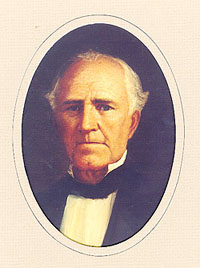
EARLY TEXAS CHURCH HISTORY
Joseph Smith sent an emissary, Lucien Woodworth, to Sam Houston in
Austin during March 1844 to investigate the possibility of purchasing territory in the Texas Republic to create a nation in southwest Texas as a buffer between Texas and Mexico and a place for the Church to exist unmolested. Brother Woodworth was likely the first Mormon in the Texas area. Final negotiations were to be handled by Woodworth, George Miller, and Almon Babbitt but Joseph was martyred about one month after Woodworth’s return which ended negotiations. Texas became a state during 1845. The first Mormon group to enter Texas to live would have been the
approximately 150 people led by Apostle Lyman Wight during 1845 as they
journeyed to Texas from the Pinery area of Wisconsin. This group rejected the leadership of Brigham Young and the Apostles at Nauvoo in favor of what they thought, was the will of Joseph Smith to go to Texas.
The Wight group had left the Black River area of Wisconsin in the spring on
flatboats, traveled for a time on the Black and Mississippi Rivers beginning 28 March 1845 to near Davenport, and then went overland from southern Iowa to Texas. They crossed into Texas during early November and wintered in Grayson County south of present day Lake Texoma before
Travel for this group included some death and much suffering. However,
they were committed to obey Apostle Wight’s every instruction. Polygamy was practiced by them.
Brigham Young sent Samuel Bent from Nauvoo to meet the group in Iowa
in an attempt to divert them to Nauvoo to join the Saints without success.
Wight and Bishop George Miller were instructed prepare to lead a group of
Church members to Texas from the Wisconsin Pine area by Joseph Smith prior to Joseph’s death in June 1844. This move would be done after the negotiations with Texas, was complete. Also, Wight was instructed by the Quorum of Twelve Apostles in August 1844 to lead members to Wisconsin and establish a settleme and possibly prepare his group to move to Texas. Brigham Young made it clear however that only the Wisconsin group was instructed to do so. Bishop Miller was not a part of this second group and chose to remain in Nauvoo.
Later that year these instructions were rescinded but there is confusion as to whether Wight received word of the change from the Quorum of Twelve or ignored them as he lead approximately 150 people from Wisconsin to Texas. On at least two different occasions a person representing the Church went to Texas and informed him he should end the Texas mission and move to Utah.
William Clayton accused Lyman Wight of encouraging the burning of the
lumber at Nauvoo to be used in building the Temple. Wight felt the Temple
completion was unnecessary after Joseph’s death. This required Church leaders to establish protective guards around the Temple and the lumber.
Lyman Wight was older than Brigham, was an Apostle, a member of the
Council of Fifty, had received his Second Anointing, and considered himself duly authorized to follow through with Joseph’s instructions even after Joseph’s death.
The Council of Fifty was a group of leaders organized by Joseph Smith on
11 March 1844, including some non-members, to find a solution to where the saints might settle and be out of the jurisdiction of the United States government. Under consideration were Texas, California, Wisconsin, Oregon and the Rocky Mountains. Brigham taught that a man such as Lyman Wight had authority to build up a kingdom unto himself, but the leadership of the Church rested with the Quorum of Twelve Apostles as Joseph had instructed prior to his death.
Safety for the Church and its leaders in avoiding Texas became a key
concern for the Twelve. Of course revelation from the Lord to Brigham and the Twelve was an overriding factor. Lyman Wight’s almost continuous estrangement from Nauvoo and Church leadership likely played a part in his decision to go to Texas. Problems that developed with the Wight group in Texas such as Comanche Indian raids, Civil War disagreements, extreme weather, conflicts with locals and some potential conflicts with the U.S. Military are all issues that proved Brigham to be right in moving the Saints to Utah.
Two additional Apostles: John E. Page and William Smith also refused to
follow Brigham and the majority of the Twelve. Ironically, these three Apostles, including Wight, were the only Apostles serving in the Council of Fifty. Lyman Wight in Texas and William Smith in Kentucky developed a close alliance for a short time that helped promote the patrilineal form of succession of Church leadership that the Reorganized Church of Jesus Christ of Latter-day Saints came to believe. William Smith felt he should have been the true successor to his brother Joseph and didn’t appear threatened by young Joseph III who was still only 17 years old at the time. Wight seemed happy to promote anything that denigrated Brigham Young’s leadership.
A great hypocrisy of this alliance was exposed when they exclaimed to the
world that Brigham Young was teaching a principle of polygamy unlike them.
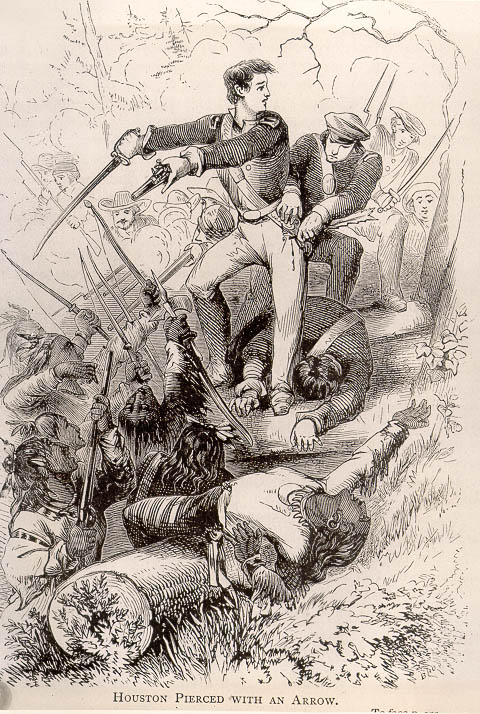
In fact, both men had practiced and promoted polygamy. The inevitable schism in this alliance occurred shortly after it began but the theory of patrilineal succession continued until the late 20th century when no male
heir arose to take his father’s place as President of the RLDS Church.
About that time the RLDS Church was renamed the Community of Christ.
The importance of the Book of Mormon was downgraded and the Church began emphasizing world peace as an important motto. The verbal promotion of world peace versus the actions generated by priesthood authority and the influence of the Holy Ghost seems to be the resultant effect of losing both the Priesthood and the Holy Ghost.
Lyman Wight’s grandson, Heman C. Smith, and great-grandson, Heman
Hale Smith, became Historians for the RLDS Church. Both defended Joseph
Smith III’s assertion that his father, Joseph Smith Jr., had not begun teaching the principle of polygamy but that Brigham Young had initiated it. During their tenures as historians some very important documents such as marriage records and journals that would have contradicted their stance seemed to be conveniently lost.
Declining Priesthood instructions to go west with the Saints in 1847 Bishop
George Miller traveled from Winter Quarters Nebraska into Indian Territory with Church members Joseph Kilting (Lucy Matilda Johnson), Richard Hewitt, their families and others including women and children. They intended to eventually go to Texas to see Brother Miller’s son and perhaps stay. Most had familial ties to the Wight group. John F. Miller, George Miller’s son, was with Wight in Texas and was married to Lyman Wight’s daughter, Rosina.
They first traveled to an area just north of Kansas City Missouri called
Plattesville looking for work but discovered that Church member Alpheus Cutler had already taken the work. Then learning that workers were needed in the Cherokee Nation they decided to go to that location. They arrived in Tahlequah, which was the capital of the Cherokee Nation, on 9 July 1847.
After obtaining work Bishop Miller began teaching the restored gospel in his home at first and then in the Tahlequah courthouse. Antagonism quickly followed with other religion’s missionaries and Bishop Miller was forced to leave on 16 December 1847 and continue to Texas. Some stayed in the area to finish the work that was started. It is said that 3 brick houses
built by Mormons are still in Tahlequah. After a very difficult trip with problems of diseased animals they were met on 30 January 1848 by Lyman Wight and his wife, Harriet.
After agreements were reached on their living by the rules of the community they joined the Wight group at Zodiac which was the second settlement established by this group in Texas and was a short distance east of Fredericksburg, Texas. Miller later denied having agreed to the arrangement. Bishop Miller was a prominent leader of the Church in Nauvoo under Joseph Smith but would not follow Brigham Young’s leadership after Joseph’s death.
Miller originally chose not to join Lyman Wight, probably because of
disagreements he had with Wight that once brought them to a fistfight in Nauvoo. Bishop Miller and Apostle Wight were strong men accustomed to taking the lead and getting things done. Bishop Miller did not stay in Texas, partly because he could not abide the communal rules in the Wight society and partly because he was not accepted by the group, including members of his own family. Miller left the Wight group during the summer of 1848 and attempted to farm near Austin but was invited back into the group during February 1849. He left for good a few months later and joined the James J. Strang group in Michigan during September 1850. Bishop George Miller died during 1856 in Illinois while on his way to California. James J. Strang was assassinated by some of his followers during 1856.
Miller was very effective in establishing roads and bridges as the pioneers
traveled from Nauvoo to Winter Quarters Nebraska. However, once his group settled at Winter Quarters they kept themselves somewhat isolated from Brigham Young and most of the other pioneers. Bishop Miller’s estranged wife, Sarah, died during 1848 in Texas. Joseph Smith’s death in June 1844 had created a need for a new Church leader. Brigham Young led the main body of Church members and the majority of the Apostles to what became Utah. The diaspora from Nauvoo created pretended leaders such as Sidney Rigdon in Pennsylvania, Lyman Wight in Texas, James J. Strang in Michigan, William Smith in Kentucky, Alpheus Cutler in Iowa, and Joseph Smith III in Iowa who later moved to Independence Missouri. There was a
great need for the influence of the Holy Ghost at this time.

